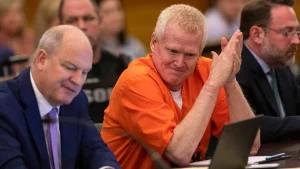Summer Standstill: How Europe’s Power Centers Navigate Global Crises During August Exodus
While Crises Mount, Brussels’ Corridors of Power Fall Silent
In the sweltering heat of August, while international tensions escalated and environmental disasters unfolded across the continent, the European Union’s institutional heart experienced its annual paradox: an almost complete administrative shutdown amid mounting global challenges. The juxtaposition could hardly be more stark—President Trump’s aggressive trade maneuvers, the intensifying conflict in Ukraine, and devastating wildfires raging across southern Europe all demanded urgent attention precisely when the EU’s decision-making apparatus had entered its traditional summer hiatus.
The corridors of the Berlaymont building, normally bustling with diplomats, policymakers, and administrators, stood eerily quiet. Meeting rooms that typically host contentious negotiations remained dark. The European Quarter, Brussels’ administrative district, transformed into something resembling a ghost town, with favorite haunts of eurocrats—from the upscale restaurants of Place Jourdan to the coffee shops around Schuman roundabout—operating on skeleton staffs or closing entirely. This annual August exodus represents more than just vacation time; it embodies a deeply entrenched European tradition that predates the EU itself, reflecting cultural priorities that sometimes perplex outside observers, particularly from countries like the United States where government functions maintain continuity year-round.
“The Brussels August shutdown is a political and administrative reality that has existed for decades,” explains Dr. Sophia Vermeulen, professor of European governance at the Free University of Brussels. “What makes this year particularly challenging is the convergence of multiple international crises that don’t respect our institutional calendar. The machinery of European diplomacy doesn’t entirely stop, but it certainly shifts into a lower gear precisely when global developments seem to be accelerating.” Indeed, while emergency protocols remain in place and essential staff maintain operations, the reduced capacity for coordinated response becomes evident in delayed reaction times and provisional statements that often require revision once full staffing resumes in September.
Crisis Management in Absentia: How Europe Handles Emergencies During the Summer Pause
Despite the administrative slowdown, Europe’s capacity to respond to crises never completely disappears. A carefully orchestrated rotation system ensures that key positions remain covered, even if not by the principal officeholders. Senior diplomats take staggered vacations, emergency communication channels stay operational around the clock, and digital connectivity allows for virtual consultations when absolutely necessary. “We have adapted our protocols to maintain critical functions,” notes Jean-Claude Mercier, a veteran EU civil servant who has worked through fifteen summer recesses. “But there’s no denying that response mechanisms operate at reduced efficiency when significant portions of the decision-making chain are dispersed across Mediterranean beaches or Alpine retreats.”
The consequences of this seasonal pause manifest differently depending on the nature of the crisis. For slow-burning issues like climate policy negotiations or trade disputes, the August lull might cause frustrating delays but rarely creates catastrophic outcomes. More immediate emergencies, however—such as natural disasters or sudden geopolitical escalations—can expose the vulnerabilities in this system. When wildfires ravaged Greece, Portugal, and parts of Italy this August, coordination of EU-wide firefighting resources proceeded more slowly than optimal, with some officials participating in emergency meetings while visibly sitting on hotel balconies or beachside locations. Similarly, when President Trump announced unexpected tariff measures affecting European exports, the EU’s response came initially from a patchwork of available commissioners and spokespeople, lacking the unified messaging that might have emerged during regular operational periods.
What emerges during these summer crises is a distinctive form of European crisis management—one characterized by improvisation, delegation, and pragmatic acceptance of imperfect solutions until full institutional capacity resumes. “The system doesn’t collapse, but it does adapt,” observes Helena Dalli, a former EU Commissioner. “Deputies step up, political leaders cut vacations short when absolutely necessary, and there’s an unwritten understanding that September will bring more comprehensive responses to whatever emerged during the summer months.” This creates a pattern familiar to Brussels insiders: crisis management in August, followed by intense policy development in September, often leading to major initiatives being announced in October after the post-vacation catching-up period concludes.
The Ukrainian Conflict: Testing Europe’s Summer Response Capabilities
The ongoing war in Ukraine provides perhaps the most telling example of how this summer governance model functions under pressure. As Russian forces intensified operations in eastern Ukraine during August, European capitals scrambled to maintain coordinated support for Kyiv despite dispersed leadership. Defense ministries operated with reduced staff, intelligence briefings occurred less frequently, and decision-making chains extended across multiple vacation destinations. “We’ve had to adapt our communications strategy knowing that key European counterparts might be harder to reach promptly,” admitted Andriy Yermak, head of the Ukrainian Presidential Office, during a recent press conference.
These challenges became particularly evident when urgent decisions regarding military aid packages required approval across multiple European capitals. Documentation languished in diplomatic pouches waiting for signatures, videoconferences had to accommodate participants calling in from remote locations with sometimes unreliable connections, and press officers crafted deliberately vague statements that wouldn’t require immediate high-level clearance. Yet despite these complications, essential support continued flowing—albeit sometimes with delays that Ukrainian officials privately described as frustrating but understandable given European administrative realities.
The summer pause also affected intelligence sharing and strategic planning, with some weekly security briefings postponed or conducted with substitute personnel lacking full authority to make commitments. “We’ve learned to anticipate the August slowdown and front-load critical requests in July,” explained one Ukrainian diplomat speaking on condition of anonymity. “It’s just another variable in the complex equation of international support that we’ve had to master.” European officials counter that core security functions remain fully operational regardless of the season, but acknowledge that the comprehensive political engagement that characterizes EU support during regular operational periods diminishes somewhat during the summer recess.
Climate Catastrophes Wait for No Vacation: Environmental Crises During the Brussels Exodus
If geopolitical crises strain Europe’s summer governance model, environmental disasters test it even more directly. This August’s devastating wildfires across southern Europe created a particularly challenging scenario—the very regions where many EU officials vacation became emergency zones requiring coordinated European response. The paradox was inescapable: firefighting resources needed deployment to areas where decision-makers themselves might be trying to enjoy family holidays, creating both practical and perceptual complications.
“The climate emergency doesn’t respect institutional calendars,” notes Francesca Romano, environmental policy researcher at the European Policy Centre. “What we’re seeing is the collision of an administrative tradition from a different era with the realities of climate change that demand constant vigilance and response capability.” The EU’s emergency response coordination center maintained operations throughout August, but with reduced staffing and longer authorization chains for deploying resources across borders. When fires threatened popular tourist destinations in Greece and Portugal, some vacationing officials found themselves simultaneously arranging personal evacuations while attempting to coordinate professional responses from improvised workstations in hotel lobbies or vacation rentals.
This reality has prompted increasing debate about whether the traditional August shutdown remains sustainable in an era of cascading climate emergencies. Several MEPs have begun advocating for reforms to ensure more robust year-round operational capacity, particularly for environmental crisis response. “We cannot continue pretending that we can simply pause European governance for a month while the continent literally burns,” argued Dutch MEP Sophia van der Linden in a widely-shared social media post from her interrupted family vacation in Sicily. “Either we adapt our institutional rhythms to climate realities, or we’ll keep facing these same painful contradictions every summer.”
Trade Tensions and Economic Monitoring: The Financial Cost of Summer Silence
While environmental and security crises create the most visible challenges during Europe’s summer pause, economic and trade issues demonstrate perhaps the most significant strategic vulnerabilities. When President Trump announced new trade measures targeting European exports in mid-August, the EU’s ability to formulate a coordinated response suffered from the dispersal of key economic policymakers across the continent. Financial markets, operating without seasonal breaks, reacted immediately while European institutions struggled to articulate a clear position beyond preliminary statements from available spokespersons.
“There’s a recognized window of opportunity for applying pressure on Europe during August,” explains Dr. Thomas Weisberg, international trade specialist at the European University Institute. “Strategic competitors understand that decision-making processes slow significantly, creating a period where European responses are likely to be delayed or fragmented.” This vulnerability extends beyond immediate trade disputes to broader economic monitoring and crisis prevention. With reduced staffing at economic analysis units and finance ministries operating with skeleton crews, the capacity for early detection of market turbulence diminishes precisely when vigilance might be most needed.
Financial institutions have adapted somewhat better than political ones, with the European Central Bank maintaining more robust summer operations than many governmental counterparts. Nevertheless, the coordination between monetary and fiscal authorities that increasingly characterizes modern economic governance becomes more challenging during the summer pause. “We maintain essential monitoring systems year-round,” notes a senior ECB official who requested anonymity to speak candidly. “But the broader economic policy coordination that involves multiple institutions and national governments undeniably becomes more complicated in August when key principals are harder to reach and decision-making processes extend.”
As Europe confronts an increasingly volatile global economic environment, this seasonal vulnerability has prompted calls for reform from business leaders and economic analysts. Some suggest staggered vacation periods that would maintain more consistent institutional capacity, while others advocate for more robust delegation protocols that would empower acting officials with clearer authority during absence periods. What remains clear is that in an interconnected global economy that never truly pauses, Europe’s traditional summer hiatus represents both a cultural distinction and a potential strategic weakness that competitors have learned to exploit.
Reforming Tradition: The Future of Europe’s Summer Governance Model
As another August draws to a close and Brussels prepares for its September renaissance, questions about the sustainability of Europe’s seasonal governance model grow increasingly insistent. Climate change ensures that summer emergencies will likely increase in both frequency and severity. Geopolitical competitors have demonstrated their willingness to exploit Europe’s predictable August vulnerability. Economic volatility respects no calendar. These realities have prompted serious discussion about potential reforms while acknowledging the deeply entrenched cultural traditions that underpin the current system.
“What we’re witnessing is the tension between European work-life balance priorities and the demands of continuous global governance,” observes Dr. Elena Konstantinidou, specialist in comparative institutional structures at Sciences Po Paris. “The challenge will be finding a model that preserves Europe’s commitment to sustainable work practices while ensuring institutional resilience during critical periods.” Proposals under consideration range from modest adjustments—such as more formalized rotation systems and clearer emergency protocols—to more fundamental reconsiderations of the administrative calendar itself, potentially spreading vacation periods more evenly throughout the year.
Whatever reforms eventually emerge, they will need to navigate the complex cultural and institutional landscape that makes European governance distinctive. The August pause represents more than mere administrative convenience; it embodies deeply held values about work-life balance, family priorities, and a particular vision of sustainable professional practice. As Europe’s leaders return to Brussels in September, refreshed from their Mediterranean sojourns or Alpine retreats, they will face the familiar post-vacation challenge: addressing crises that emerged or escalated during their absence while simultaneously contemplating how to prevent similar vulnerabilities next summer. In this annual cycle of crisis and reflection lies both the peculiar weakness and perhaps the distinctive strength of European governance—a system that prioritizes human sustainability even as it struggles to address an increasingly unsustainable world.










